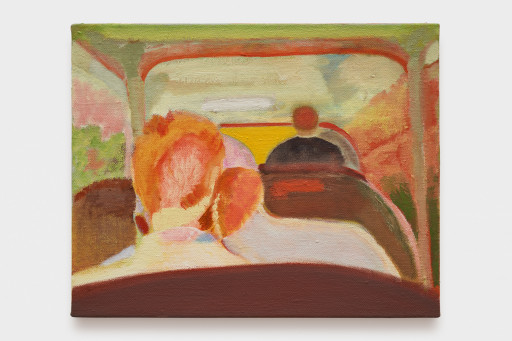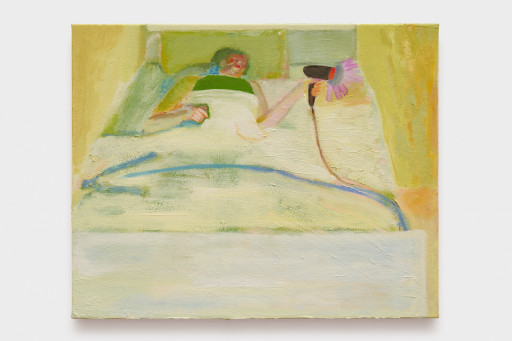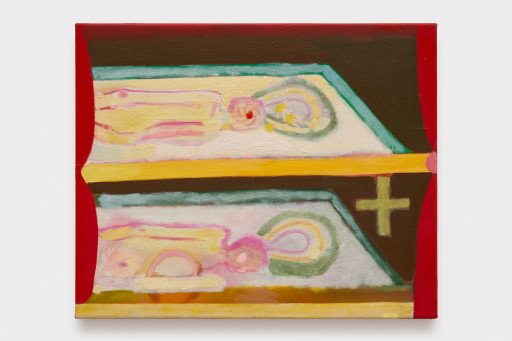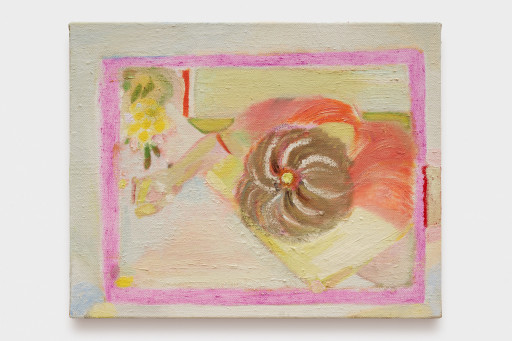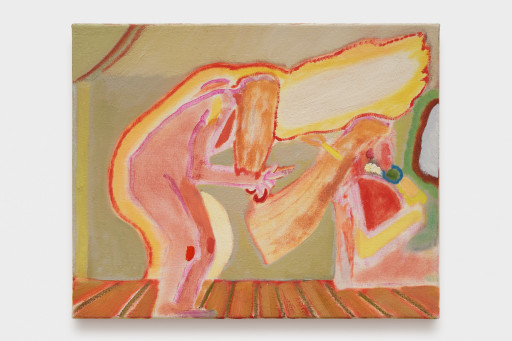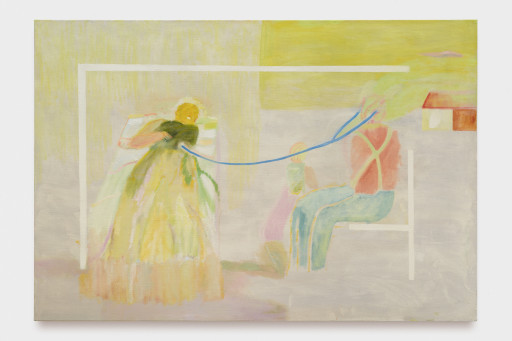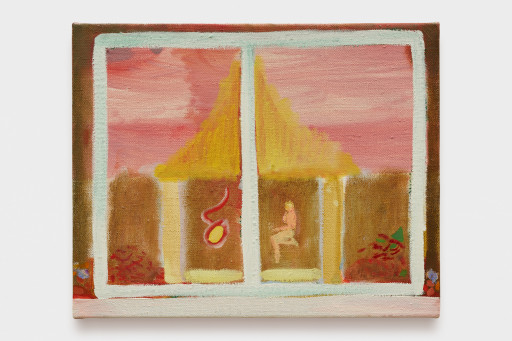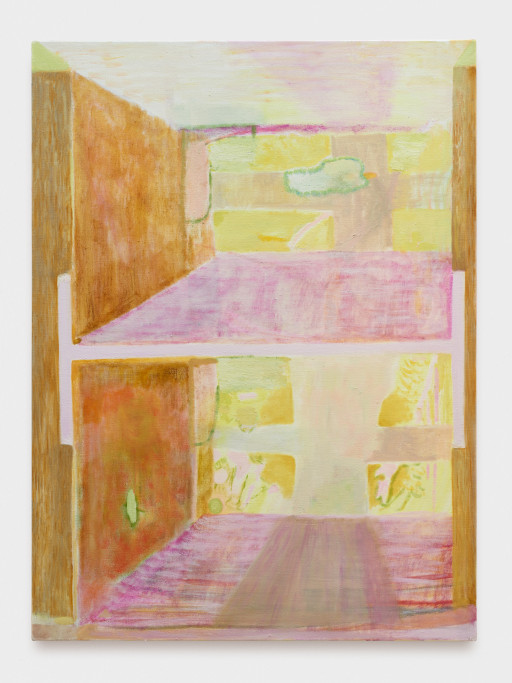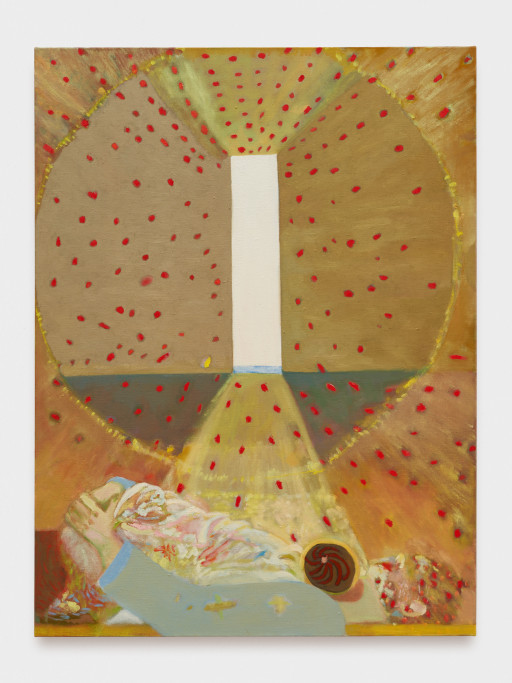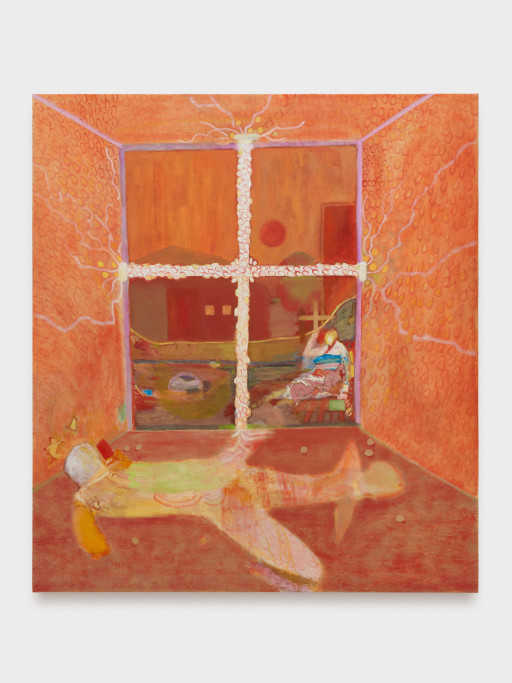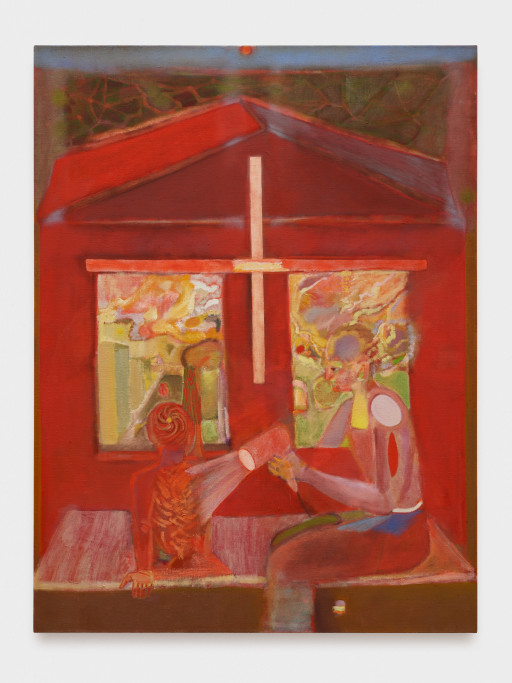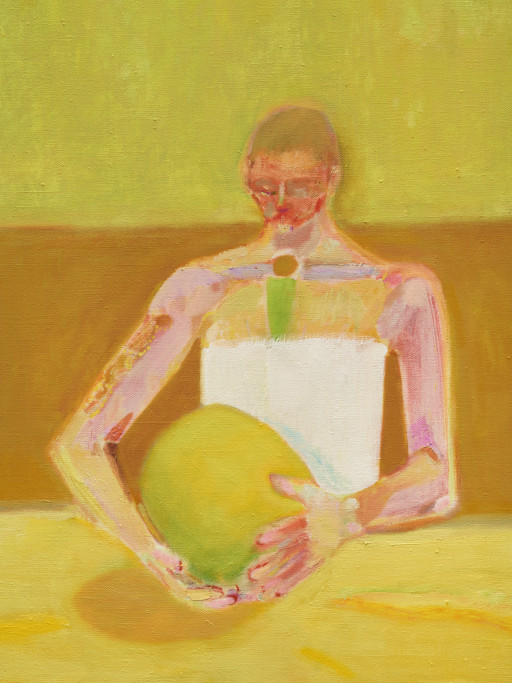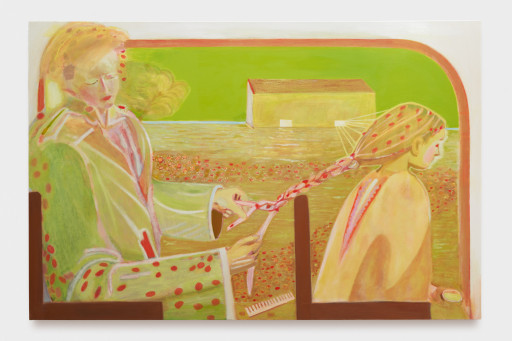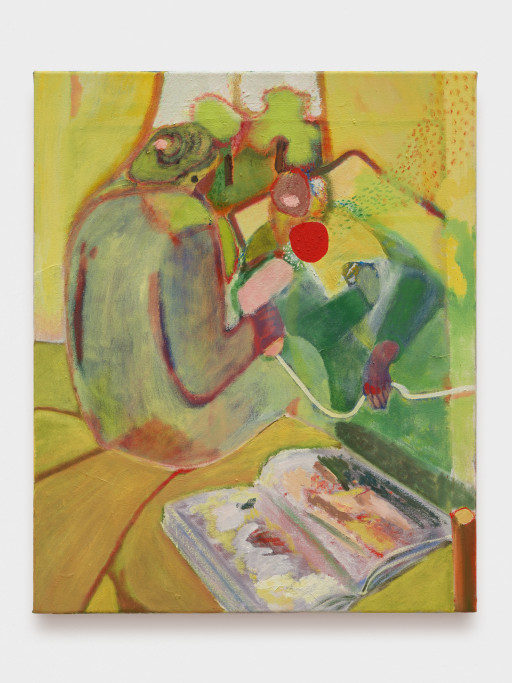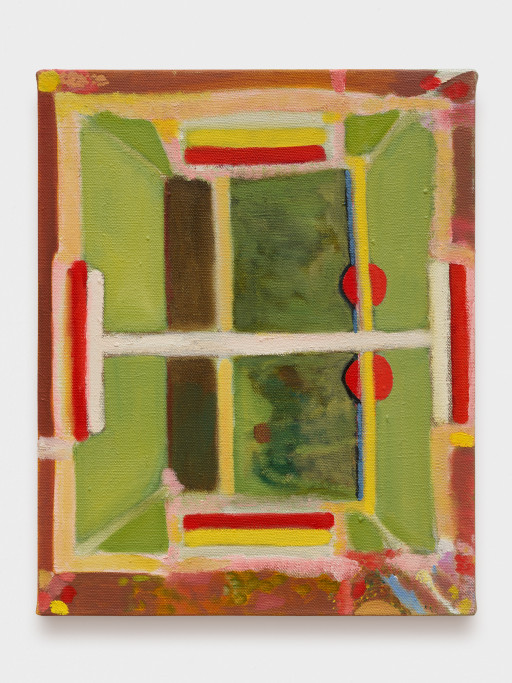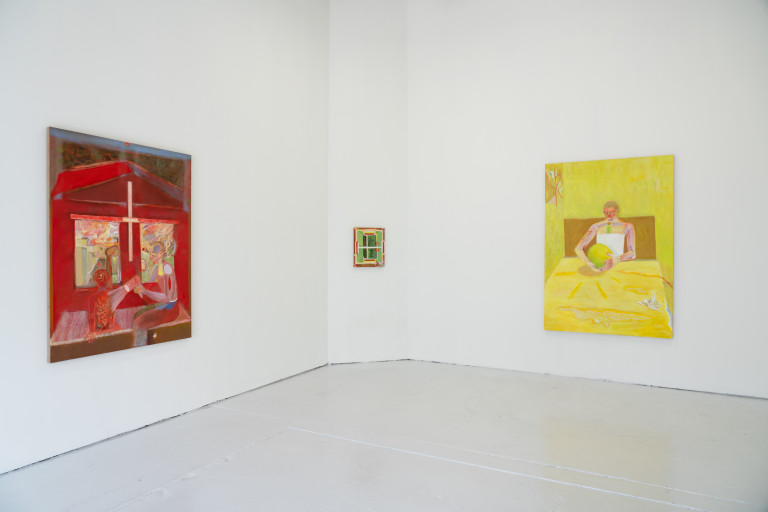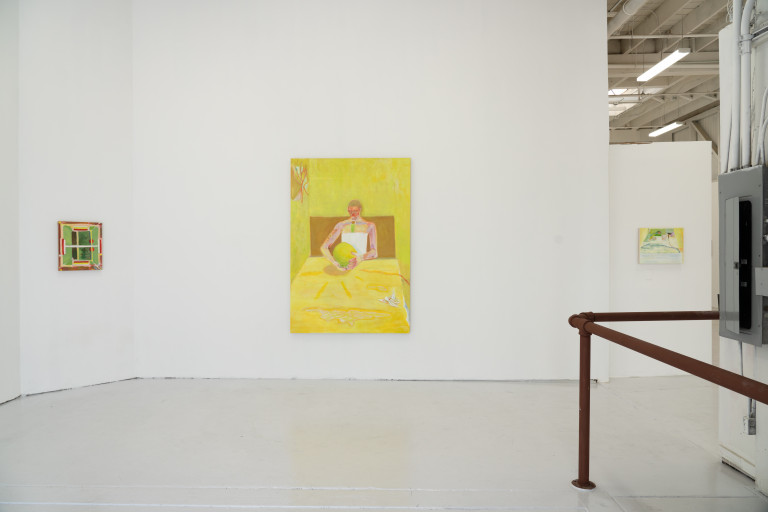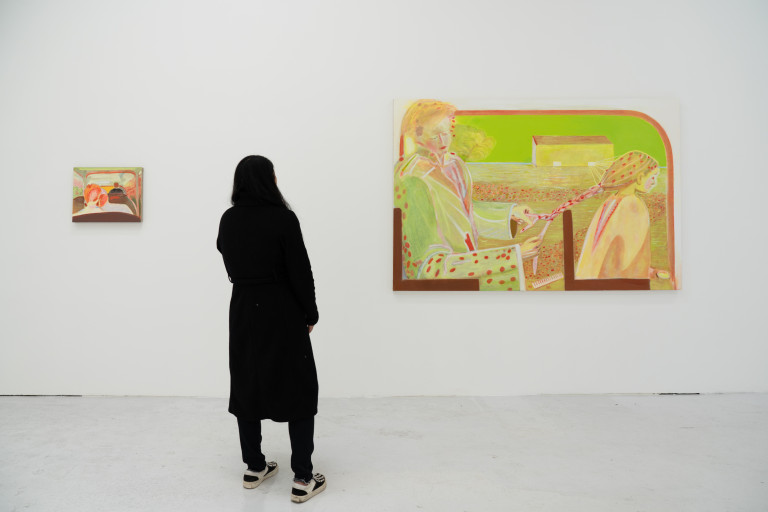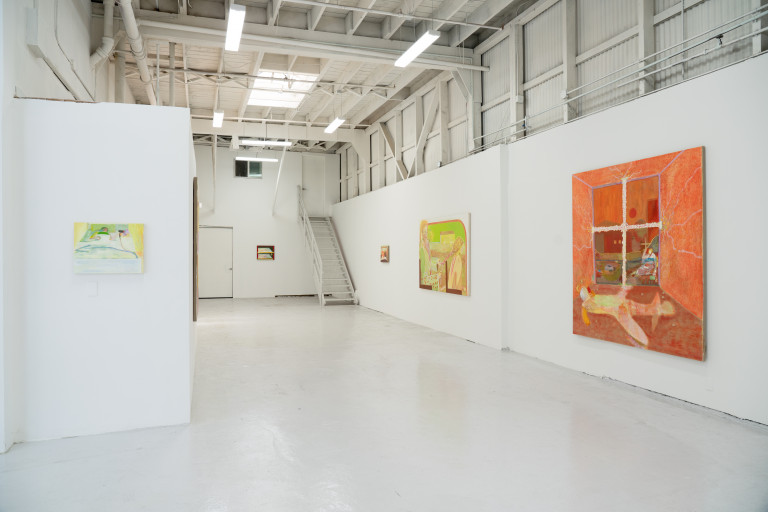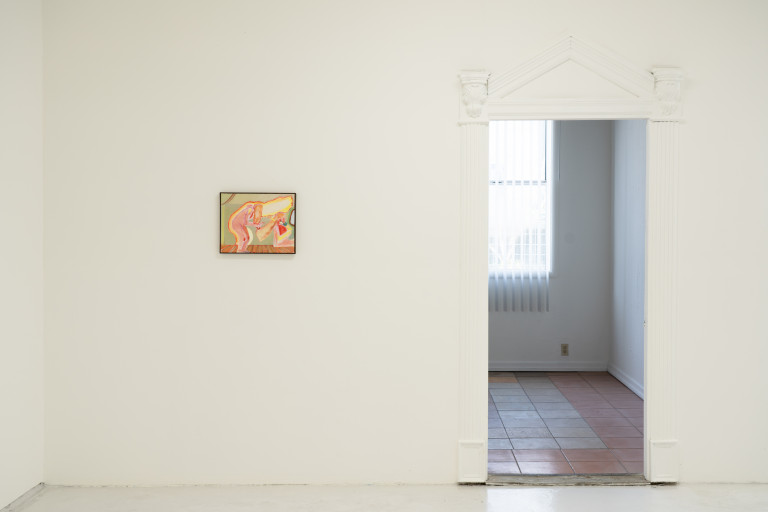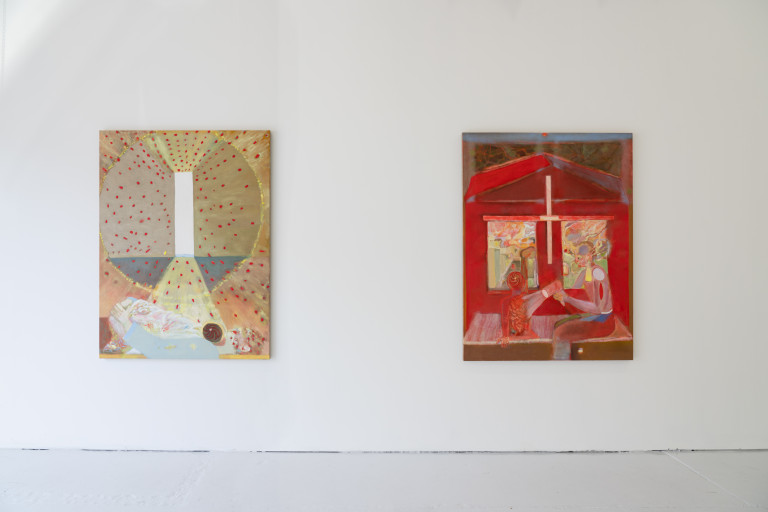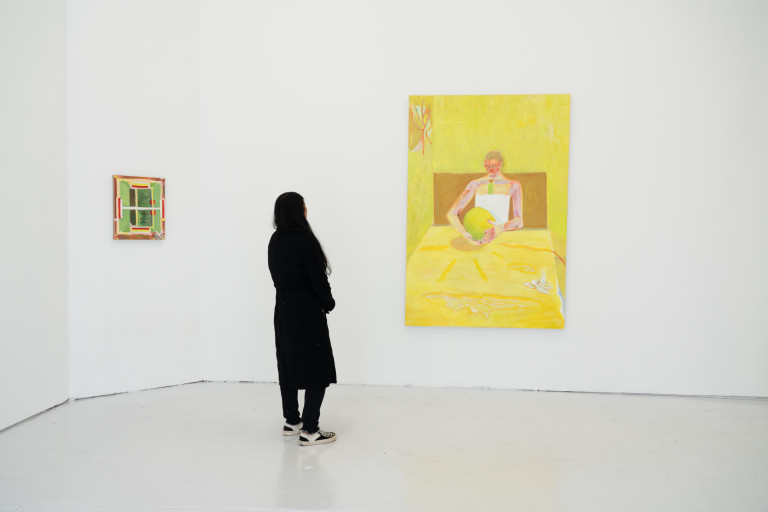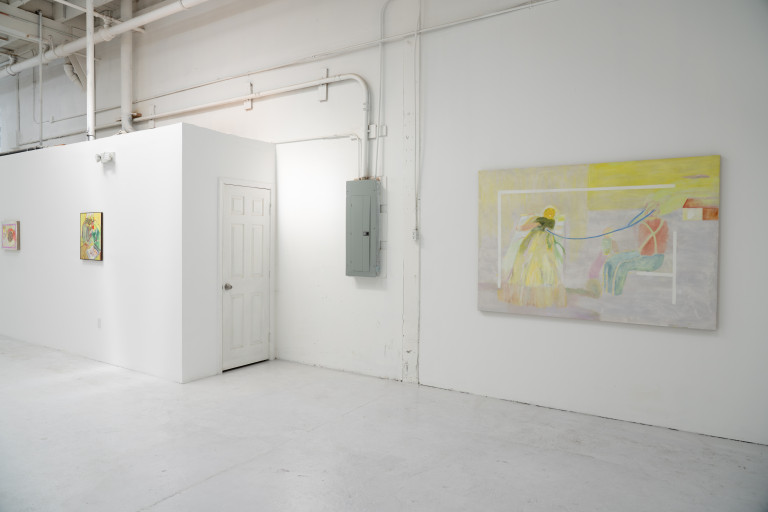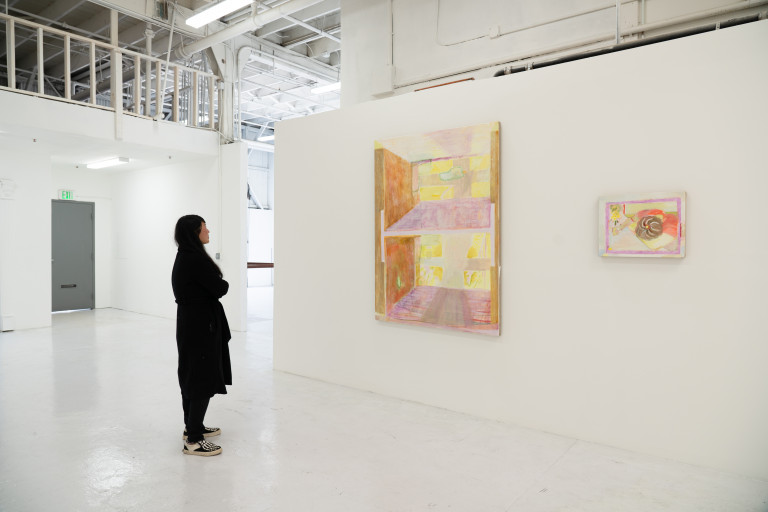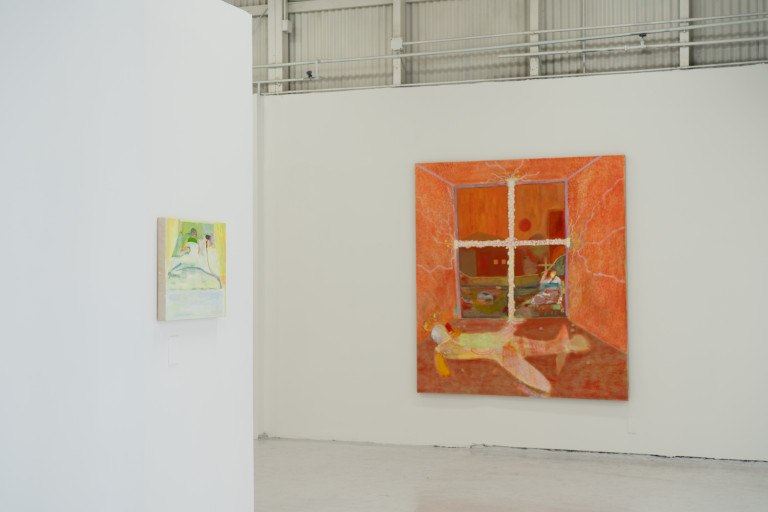Friends Indeed Gallery is pleased to present Signal, a debut solo exhibition by Gabriella Boyd. Painted concurrently, Boyd’s suite of new canvases share color palettes that emphasize reds and greens — a combination that enhances each hues’ brightness while competing for foreground. Warm yet sickish, blood-reds and molded-greens animate a libidinal economy’s capricious balancing act of life and death, growth and decay.
As in red-green colorblindness, a spectrum of yellows mediates Boyd’s palette. The color choices, subjects, and settings of Signal, likewise hinge on a suspended “yellow” space, where relations can be negotiated and tension resolved. Just as yellow delineates a duration of receptivity, caution, and discretion in the context of universal traffic signals, so too Boyd’s subjects are frozen in moments of transmitting non-linguistic relational cues.
The motivations that inform the figures’ physical proximity remain ambiguous. As relational contexts are put into question, it's unclear whether we’re viewing intimate moments of gentle interpersonal care between family members and lovers, or strangers assuming transactional roles of caregiver and patient, practitioner and client. The agents are concerned with procedures as serious as the transmission of fluids or as trivial as the grooming of hair, and their haunting liaisons periodically include the use of handheld fictional gadgets — imagined machines that dispense oracles of premonition, projected fantasies, desired cures, or new vantage points.
Like trepidatious specters or misplaced memories, the figures partially merge with their surrounding architecture. A room’s geometry wraps around, penetrates, and intersects bodies, drawing parallels between architecture and anatomy while invoking the co-constituting relationship between flesh and environment. Swaths of color, ranging from subdued to inflamed compose flat plains of bed sheets, floors, and windows that divide spaces and frame figures. The enclosed interiors are echoed in the liminal, containing spaces of the canvases, arranged with details and drama to be consumed like short stories.
Tenderly negotiating boundaries, the partially transparent bodies hesitantly reveal their organs, lungs, and hearts. Their registers of physical or emotional intimacy fluctuate depending on how clinical or domestic the interiors are interpreted. While both hospitals and homes host vulnerability and care, a medical context emphasizes material bodies while interpersonal care is more commonly relinquished to domestic realms. Private homes further explore the porous divisions of minds, bodies, others, and environments as primary relationships and cohabitation influence the contours of our psychic frames.
Echoing the concept of ‘bodymind’, a clinical approach to understand mental cognition and the physical body as a single integrated unit, Boyd’s paintings craft symbolic spaces where the body/mind divide can collapse and gulfs between people traversed through organic signals. In a productive refusal to distinguish between emotional cathexis and viral infection, Boyd’s rendering invisible exchanges visible offers expansive metaphoric potential. The undisclosed nature of relationships and contexts holds open interpretation, creating a tool to mitigate bodily sensations and the exterior world — merging the material and immaterial.
— Marie Heilich
